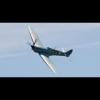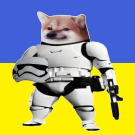Search the Community
Showing results for tags 'special hobby'.
-
Sure hope that 'Cannon Fighter' box also gets upgraded.
- 5 replies
-
- 6
-

-

-
- Special Hobby
- Westland
-
(and 1 more)
Tagged with:
-
There was only ever one rocket-armed Wirraway. A little history... In 1949 the front-line fighter of the RAAF was the Mustang, and the first Vampires were starting to arrive (the RAAF's first jet fighter). Advanced training and refresher training for fighter pilots was being carried out using CAC Wirraway aircraft, but the Wirraways were not able to train pilots in the full syllabus required by fighter pilots, since they were not fitted with gyro-stabilised gun-sights and they could not carry rocket armament. So in December of 1949 the RAAF Director of Technical Services wrote to RAAF Headquarters on behalf of the Air Member for Technical Services with a request to enable a full syllabus of training to be carried out with Wirraway aircraft by fitting the following items: An AN-N6 Cine Camera Gun (as an alternative to the G.45 gun cameras already fitted); A Gyro Gun Sight (Mark 2D Series 2 or 3) in lieu of the Reflector Sight installed by Wirraway Order No. 134 (offset to the left to enable the instructor in the rear seat to have an unobstructed view when using the Aldis sight); Rocket pods (zero length rails) to enable the carriage of 6 rockets (3 under each mainplane) in such a manner as they do not interfere with bombing and gunnery installations; and Provide remote controls in the rear cockpit for the operation of the VHF set installed by Wirraway Order No. 173 (which only specified operation from the front seat). It was requested that the Air Armament School (AAS) at East Sale be instructed to carry out a prototype installation, and that Technical Services officers would visit if assistance was needed. This was seen as an urgent training requirement, and the AAS prototyping was requested as soon as possible. The Mark 2D Gyro Gun Sight and the AN-N6 Camera were both designed for 24V operation, requiring voltage boosters to enable them to be operated from the Wirraway’s 12V electrical system. Tests were required to determine if the power from the Wirraway’s engine-driven generator would be sufficient for these extra items and their voltage boosters. The requirement that the RP installation should not interfere with the existing bombing and gunnery installations was ambiguous, as it did not specify if the aircraft should carry under-wing gun packs (which were already fitted to all Wirraways at this time) and RP rails at the same time, or if the gun packs could be swapped for RP rails. The prototype installation carried out at AAS followed the second of these interpretations. Records show that Wirraway A20-729 was used for a mock-up installation and A20-723 was modified for the full installation and flight trials. The first flight with the new equipment fitted was carried out on 20 July 1950 at East Sale. The first rocket firing was carried out during a flight on 24 July. Further successful firing tests were carried out in July. But the program was discontinued and no other Wirraways were fitted with this capability. I've uncovered a sketch of the proposed rocket installation by the AAS, but I've never come across photos of the aircraft or the trials. So I'm basing this build on "educated speculation". So I'm planning to model A20-723 fitted with six RP-3 rockets on zero-length rails, a gyro-stabilised gun-sight and an AN-N6 gun camera on the wing centre-section. To duplicate this aircraft, I'll need a Wirraway kit, and ideally some rockets plus a gyro-stabilised gun-sight. The Wirraway will be the 1/72 Special Hobby kit (in all its flawed glory). Looking at my stash, the gun-sight and zero-length rails will come from a Tamiya F-51 kit and the RP-3 rockets will come from a Valom Bristol Buckmaster (why do I have two of those in my stash???). Here's where the fun will begin: First up is to construct the fuselage frame and detail the cockpits. Here are a couple of photos of the start of this process, alongside a scratch-built fuselage frame I've made for an MPM Wirraway I'm also building. Important to note that we must ignore the kit instructions here... Wirraways were all silver inside, no C364 "interior green" at all. None. Everything was silver, except black instrument panels, black electrical panels, and various red and yellow highlights for controls. No "interior green". And another view showing the instrument panels. You can see that the framework tubes are fairly chunky and SH have not replicated the framework too well. Several extra tubes have been added, and some real tubes are missing. Plus the foot-troughs should be discontinuous, not one long trough as the kit provides. But I'm living with it for this model... definitely changing it for my 1/48 and 1/32 builds... Edit: Note that there are two radio sets under the rear instrument panel (R.1082 and T.1083) - these were no longer in use by the 1950s, so I've removed them from the model.
- 36 replies
-
- 14
-

-
- CAC
- Special Hobby
-
(and 1 more)
Tagged with:
-
After the Dassault Mirage F-1, Special Hobby is to release a complete family of 1/72nd Dassault Mirage III/5 Nesher/Dagger kits. Sources: http://www.specialhobby.info/2018/10/special-hobbys-new-172-mirages-iii-5.html http://www.specialhobby.net/2018/09/special-hobby-pripravuje-modely-mirage.html First 3D renders of MIIIC and CJ V.P.
- 502 replies
-
- 20
-

-

-

-
- MIII
- Special Hobby
-
(and 1 more)
Tagged with:
-
First finished model of the year for me. The WIP is there: The final pics: I am not entirely satisfied with thekit and the finish but I like the coulourful and original livery. The next Meteor will be the Airfix F.8 in IAF livery.
- 8 replies
-
- 50
-

-

-
- Special Hobby
- 1/72
-
(and 1 more)
Tagged with:
-
Second completed build of the year, the Special Hobby Ki-43 Oscar. This has a somewhat amusing - now, from a distance - history, as my Oscar build was intended to be the AML version, which came with resin parts, etch and vac form canopies. Unfortunately the kit turned out to be one of those that exceeded my modelling skills - such as they are - and due to some fit issues - of mega proportions - I reluctantly abandoned the kit. Which was a shame, as I wanted to use the AML kits' unusual paint scheme and decals supplied, a red brown upper surfaces over a grey undersurface, instead of the usual Japanese gree/mottled/ nmf scemes Japanese aircraft kits seem to come in. Here's the AML painting instructions; Then out of the blue for me at least, Special Hobby re released their 1/72 Oscar in in "Japan's Allies" markings, but crucially with a dual fuselage and exhausts for the both the Ki-43 III ko version, ie the AML version, as well as the cowlings with the single exhausts for the Ki-43 II version used by the "Japanese allies". Enthused, the Big H were duly ordered to supply one such Special Hobby Kit (in exchange for coin of the realm, of course) which arrived before Christmas. Hmmmm, thought I when fondling plastic, isn't this the AML kit re boxed without the resin, - or the AML kit was the Special Hobby kit reboxed? Further checking revealed neither was the case, and preparatory work was done - painting as much as possible on the sprue, etc., before New Year's Day, in tandem with the Revell 1/72 V2 rocket I made between Christmas and New Year. Once I began putting it together, oh dear, some fit issues again, again with the cowling, but nothing this time that couldn't be solved. Eventually. Now my experience with Special Hobby has been varied - ranging from the "it went together fairly well" (10) to "What the &*%*^&&&*&%^$"£ is going on here! (0)" but this one was more a 5. In other words, it needs some modelling skills. That pleased me because it meant I must have some!! There is a build of this model in the supplied Thai air force scheme in a recent issue of Airfix Model World magazine which I found interesting if not terrifically helpful. So here's the Special Hobby Ki-43 III Oscar in the AML paint scheme. I used the AML decals to go with the paint scheme. They weren't very good. In fact, the hinomaru were - let's say, not good at all. However, with some micro sol and micro set, gentle persuasion with a paint brush, they went on in the end. I only had to paint over tears in two hinomaru. Paints by Tamiya, Revell and Mr Color. My biggest disappointment was the Mr Color red brown was far more of a chocolate brown, ie it wasn't the right color.. I decided to leave the paint as it was and look for a different brand paint in that red brown colour for future use. Out of interest, I put the 5 Japanese fighter kits I've made together for this photo; clockwise from top left they are the RS models Ki-87, Hasegawa Ki-61 Tony, Special Hobby Ki-43 Oscar, Hasegawa J7W1, and Hasegawa Ki-44 Tojo. I was quite surprised to see how small the Ki-43, Ki-44 and Ki-61 are compared to the J7W1 and Ki-87. The Ki-87 never got to the prototype stage, though I am pretty sure at least one J7W1 prototype flew, but looking at them, I am still not convinced that the Ki-87 is actually a 1/48th kit mislabelled as a 1/72! Thanks for looking.
- 6 replies
-
- 10
-

-
- Oscar
- Special Hobby
-
(and 1 more)
Tagged with:
-
Tempest Mk.V Resin & 3D Printed Update Sets (For Airfix) 1:72 CMK by Special Hobby Airfix released their Hawker Tempest Mk.V in 1:72 a few years ago, and it’s a great little kit, but as always you can improve on injected styrene with resin, either traditionally cast, or 3D printed for ultimate detail. CMK have created a host of new sets to allow the modeller to ramp-up the detail to extreme levels, working with parts that are almost drop-in, far from the origins of aftermarket that could sometimes be difficult to fit inside the constraints of the kit parts. As usual with CMK's resin sets, they arrive in the familiar clear vacformed box, with the resin parts safely inside, and the instructions sandwiched between the header card at the rear. The larger engine set is in a cardboard box, with the parts in Ziploc bags, padded out by the folded instruction booklet. Engine & Fuselage Tanks (P72008) This set consists of only eight parts of 3D printed resin, but don’t let that dissuade you. The engine is protected inside the boxed-in printing base, which can be simply opened with a razor saw or nippers along the lines shown by nicks in the vertical supports. The detail is phenomenal, especially the engine, which is printed as a single part, minus its exhaust stubs. The instructions show the upper cowling panels that should be removed in red, reducing the edges to give a more realistic look. The engine is prepped and painted before it is installed in the nose in front of the cockpit, with the tanks printed integrally along with the bulkheads and ribs, needing just the exhaust stubs slotted into the sides of the massive engine block. To hang the prop off the front, a drive-shaft is pushed into a hole in the front bulkhead, then the four cowling panels that are printed at a much more scale thickness with stiffening frames on the inner faces, to be left nearby as if the mechanics have just departed for a cuppa. Exhausts (P72011) If you want your Tempest in-flight or parked-up and prepared for take-off, this set includes just the exhaust stubs on a single print-base, which are a drop-in replacement for the kit parts once liberated from their base. The detail is far superior to the kit parts, with weld-seams and hollow lips to the exhausts that add realism to your model quickly and easily. Early Gun Barrels (P72009) Containing two inserts with a pair of cannon barrels each on a single print base, handed for each wing, these parts are a straight-forward drop-in replacement for the kit parts, depicting the earlier barrel shrouds. Gunsight & Seat Correction Set (P72010) Consisting of two parts, the seat is printed in incredible detail in orange resin, and the gunsight in clear resin that is loose in the blister pack, so could easily be lost. Take care when opening the package, as it’s a very small part. Wheels Early & Late (Q72413 & Q72414) These two sets both provide a pair of wheels with different hubs and tyres. The early wheels are treadless and have five spoked hubs, while the later set has block treaded tyres and four spoke hubs on different style bases, as they are traditionally cast. They add a ton of detail and are a drop-in replacement once you have cut them from their casting blocks on the contact patch where the tyre is slightly flattened by the weight of the aircraft. Early (Q72413) Late (Q72414) Tempest Pilot, Dog & Mechanic with Accumulator Trolley (F72402) To add a little human scale, this figure set includes two humans, a pilot and ground crew member, a dog, and an accumulator trolley that was a must-have to start your Tempest in a dispersal location. The figures are all 3D printed in one part each, while the accumulator is protected inside a box-like print base, which is easy to cut where there are pre-made weakening points on the vertical supports. The trolley and A-frame are printed as one, needing just the wheels fitting to the axles at the sides, but bear in mind that the towing eye is incredibly delicate due to its scale size, so take care handling it. Conclusion You can pick and choose which of these sets that you are interested in for your model, or you can push the boat out and fit them all, although you’ll have to decide of which wheels you want to use. The detail is excellent, especially the engine, which will blow the socks off your viewers once the model is complete. Highly recommended. Review sample courtesy of
-
Special Hobby is to re-release the MPM 1/72nd Breda Ba.88B Lince kit - ref. SH72397 Release is expected in May 2019. Source: http://www.specialhobby.info/2018/10/standa-hajek-new-paintings-for-sh72384.html Box art V.P.
- 7 replies
-
- 2
-

-
- Ba.88B
- Special Hobby
-
(and 1 more)
Tagged with:
-
"Czech wars" is not over. After the surprise re-release announcement from the AZmodel 1/72nd SMB2 kit (http://www.britmodeller.com/forums/index.php?/topic/235011686-172-dassault-super-mystère-b2-smb2-by-azmodel-re-release-box-artschemessprues-release-december-2016/😞 Special Hobby is to release, in cooperation with Azur-FRROM, a new tool 1/72nd Dassault Super Mystère B2 (SMB2) kit - ref. SH? Armements and fuel tanks will be included in the box. Different boxings will offer the opportunity to reproduce the original SMB2 as well as the Israeli re-engined variant. Source: http://www.specialhobby.net/2016/11/super-mystere-172-pripravovany-model.html CADs Special Hobby, do you hear me, true scale modellers need a 1/48th SMB2 kit... V.P.
- 280 replies
-
- 8
-

-
- Super Mystère
- SMB2
-
(and 1 more)
Tagged with:
-
After the 1/72nd kits (link) Special Hobby is reported working for 2020 on a 1/48th Bell AH-1G Cobra/Sea Cobra family. Info obtained from a Special Hobby representative at IPMS Belgium National/Plastic & Steel 2019. To be followed. V.P.
- 54 replies
-
- 10
-

-
- Special Hobby
- Cobra
-
(and 1 more)
Tagged with:
-
After the 1/72nd kit (link) Special Hobby (SH) is to release 1/48th SIAI-Marchetti SF.260 kits. First boxing - ref. SH48207 Sources: https://www.specialhobby.info/2020/09/siai-marchetti-sf260-new-148-and-172.html https://www.facebook.com/specialhobby/posts/1010336579406702 V.P.
- 14 replies
-
- 8
-

-
- Special Hobby
- SF.260
-
(and 1 more)
Tagged with:
-
MPM/Special Hobby is to release 1/48th Grumman Guardian AF-2S & AF-2W kits. First test shot is on display at the Spielwarenmesse Nürnberg 2014. Source IMPS Germany : http://www.ipmsdeutschland.de/Ausstellungen/Nuernberg2014/Bilder_VH/66.html I really like the look of this aircraft! Source: http://www.aviastar.org/pictures/usa/grumman_guardian-s.gif V.P.
- 56 replies
-
Special Hobby working on SAAB VIGGEN scaled down to 1/72 metal mould made with 3D CAD-CAM CNC technology like Vampire, Gnat, Mirage etc.
- 107 replies
-
- 7
-

-
- Special Hobby
- Saab
-
(and 2 more)
Tagged with:
-
Special Hobby is to release a 1/72nd Pfalz E.V kit - ref. SH72514 Source: https://www.specialhobby.net/2024/02/norimberk-den-3-4-trubky-platno.html 3D renders V.P.
-
Special Hobby is to release in 2018 a family of Armstrong Whitworth Meteor nightfighters kits incl. NF.11/12/13 & 14 - ref. SH72358, 72360, 72363 & 72364 Source: http://www.specialhobby.net/2017/12/sh72358360363364-aw-meteory-nf.html Canopies mould V.P.
- 179 replies
-
- 4
-

-
- Meteor
- Armstrong Whitworth
-
(and 1 more)
Tagged with:
-
After the 1/48th kit by Planet Models/Red Roo Models (link), Special Hobby is to release 1/72nd de Havilland DH.94 Moth Minor (ref. 72494) & Moth Minor Coupé (ref. 72504) kits. Source: https://www.specialhobby.net/2024/02/norimberk-den-3-4-trubky-platno.html 3D renders V.P.
- 15 replies
-
- 9
-

-

-
- DH.94
- Moth Minor
-
(and 1 more)
Tagged with:
-
Short Sunderland Mk.V 'Fighting Commies in Europe and the Far East' (SH72162) 1:72 Special Hobby The Sunderland was developed by Short Brothers to an RAF requirement R.2/33 for a long range general purpose flying boat. It is thought Shorts took their work on Imperial Flying Boats to design the Sunderland, however the RAF requirement was released before the Imperial Airways requirements, and Short's decided to pursue both at the same time. The Sunderland would be a large four engined flying boat with both defensive and offensive armaments. The large wings with would mount 4 Bristol Pegasus engine were able to hold 200 Gallons of fuel giving the aircraft a 14 hour range. For defence initially four guns were mounted in a rear turret, two guns in the nose turret, and two guns on each beam. Later a dorsal turret would be added. Offensive weapons were carried internally and winched out under the wings through doors in the aircrafts sides. Later aircraft would also gain 4 fixed forward firing machine guns. German pilots nicknames the Sunderland the flying porcupine and there are numerous cases of Sunderland fighting off superior numbers off attacking aircraft. Radar fitted to these flying boats enabled them to become accomplished submarine hunters. Production shifted to the Mark III in December of 1941. This had a changed hull to improve seaworthiness. With 461 built this was the most numerous mark. Due to concern about increasing weights and the subsequent lack of engine power the Mk.V. In Australia Sunderland crews suggested that the Pegasus engines be replaced by Pratt & Whitney R-1830 Twin Wasp engines. as these were already in use on Catalinas and Dakotas. Initally Two Mark IIIs were taken off the production lines in early 1944 and fitted with the American engines. Trials were conducted in early 1944 and the conversion proved all that was expected. Along with the new engines Hamilton Hydromatic constant-speed fully feathering propellers provided greater performance. Also a Twin Wasp Sunderland could stay airborne if two engines were knocked out on the same wing while. Production was switched to the Twin Wasp version and the first Mark V reached operational units in February 1945. Defensive armament fits were similar to those of the Mark III, but the Mark V was equipped with new centimetric ASV Mark VI C radar that had been used on some of the last production Mark IIIs as well. A total of 155 Sunderland Mark Vs were built with another 33 Mark IIIs converted to Mark, more were planned but the end of the war led to the cancellation of these orders. The Kit This is a new boxing of Special Hobby's new tool Mark V from 2019, now re-released. The parts breakdown on the spures would also indicate other earlier marks are planed as well. This is an impressive kit with good quality large mouldings and a full interior. Construction starts in the cockpit. The instrument panel and pilots seats are built up onto the deck with the control columns being added. The cockpit bulkhead goes in and there is an additional seat to fit on the bulkhead. At the other side what appears to be the navigators position goes in. The lower deck under the cockpit then is assembled with its bunk areas for crew rest on those long flights. The next stage is to build up the weapons carriers and the rails which winch them out under the wings. 8 bombs are provided. The top and main decks can then be joined and the weapons section added to the rear of this sub-assembly. To the front is added the mooring deck/access to the front turret with a realistic grating effect to the floor, Additional parts can now be added inside both main fuselage halves before you can think about closing them up around the main internal section. The modeller can have the weapons windows open or closed but this needs to be done now as they swing inwards. At the rear of the main cabin the gunners position and access to the top turret parts need then to be added. At the bow the anchor needs to go in. Only once all this is done can the fuselage be closed up. The exterior now needs to be looked at, The main top insert for the turret goes in, then underneath the hull step part is added. Both of these being inserts to allow for the different marks to be kitted. At the rear the vertical fin and separate rudder go on, then the tailplanes, here the moving surfaces are moulded in. The main wings go on next. These are conventional left/right upper/lower surfaces; again the moveable surfaces are moulded in. The wings have large tabs which slot into the fuselage which should help then fit on correctly and not droop over time. If you opted for the bombs slung out under the wings now is the time to add the racks there. We are now on the finishing straight. Still on the main wing the four engines are assembled, and added on. The two main wing floats then go on. Next up its the gun turrets. All these are fitted from the outside which is a great help when it comes to masking and painting them as separate items. The front turret can be mounted slid back for mooring or in its forward position. The front boarding door can also be open as all the structure behind it is in place. The props and exhausts go on here. The last step is to attach all of the external aerials. Given there are four on the top, eight on each side; and two on the wings it's probably better left until after painting! If wanted by the modeller then beaching gear is provided for the aircraft. Clear Parts These are of the same excellent quality as the other kit parts, and again it can be seen there are parts for other marks on the clear spure. Markings The decals are printed by Cartograf so that guarantees there will be no issues with them. A generous four aircraft can be modelled using the kit decals, SV566/Z - No. 209 Sqn RAF, Seletar, Singapore 1951-53 Flown by Distinguished Czech Pilot Vaclav Bergman. S.50.4 French Naval Aviation, Lanveco-Poulmic 1951 NJ177/V - No. 209 Sqn RAF, Seletar, Singapore 1953 PP117/4X-W - No.203 Sqn RAF, Detached to Finenwerde, Hamburgh British Zone Of Germany, 1948. This aircraft participated in the Berlin Airlift carrying mainly coal and salt. Conclusion This is great new tool of an important though often overlooked aircraft for the RAF. The kit is very detailed indie and out. Very highly recommended. Review sample courtesy of
-
Special Hobby has just announced a new tool 1/48th Martin Baltimore Mk.I/II kit - ref. SH48160 Source: http://www.britmodeller.com/forums/index.php?/topic/235016099-novelties-from-special-hobby/ V.P.
- 30 replies
-
- 1
-

-
- Baltimore
- Special Hobby
-
(and 1 more)
Tagged with:
-
Happy New Year everyone. This will be my entry in the group build. It’s been in the stash since long before the Airfix kit was released. This is a good opportunity to build it! A quick look at the contents of the box: Three sprues of grey styrene, Some resin detail parts in two different colours. There is also a small PE fret with seat belts and instrument panels. I also have these after market goodies: The mask set is for the Airfix kit, but I’m hoping they’ll fit this one🤞 I was originally going to build the box top all black scheme, mainly to speed up the painting process but looking at the instructions this calls for the AI radar aerials to be made up from microscopic pieces of resin and wire. That’s not going to happen. Instead I’ll be doing this aircraft: Plate in the Osprey volume on Defiant, Blenheim and Havoc Aces. L9446 was used by Flg Off. Reg Peacock to down a Ju-87 on 18/8/40 for his fifth victory making him the only pilot to achieve ace status flying the Blenheim. This fits in well with my collection of aircraft of the aces. Decals for the codes and serials are on the way. A start has been made, all the parts have received a wash and I’ve commenced the process of carving and sanding more or less Blenheim shaped pieces out of the flash and blobs. Huge ejector pins have been ground off with the rotary tool. This very much a short run kit, no locating tabs or pins and some fairly crude moulding of the smaller parts. Dry fitting, to the extent it is possible, is not encouraging. Thanks for looking. AW
-
This one came as a complete surprise to me: https://www.specialhobby.info/2020/11/news-from-special-hobby-112020.html
- 167 replies
-
- 6
-

-

-
Special Hobby is to reissue soon its 1/72nd Heinkel He.59B kit (link) under ref. SH72428 Source: https://www.specialhobby.net/2023/11/sh48428-heinkel-he-59b-nahled-obtisku.html Box art & decals V.P.
-
In (June?) 2022 Special Hobby is to release a 1/72nd Aero Ab-11 - L-BUCD "Blue bird" on a long flight over Europe, Africa and Asia - kit - ref. SH72471 Source: https://www.hannants.co.uk/product/SH72471 V.P.
- 36 replies
-
Special Hobby (SH) is to reissue the 2002 Azur 1/48th Latécoère 298 kit (link) in its Vintage Treasure edition line - ref. VT48001 Box art https://www.specialhobby.net/2024/01/v-tiskarne-jsou-prave-v-tisku.html Source: https://www.specialhobby.net/2023/12/vt48001-latecoere-298-148-nahled.html Schemes: French & German V.P.
-
My last kit finished this year - 1:72 Hispano Aviación HA-1112-M1L Buchón. My interpretation of aircraft no. 71-5 "MAPI", serial C4K-9, 71. Escuadrón, Ejército del Aire, Gando Air Base (Gran Canaria), Ifni War (Spanish Sahara), 1958. Special Hobby kit built "out of the box" with some scratch. Thanks for watching!
- 16 replies
-
- 52
-

-

-
- Buchon HA-1112
- 1:72
-
(and 1 more)
Tagged with:
-
I’m convinced. Place holder for Special Hobby Baltimore 1/72 to be built as a 13 Sqn RAF, 454 Sqn or 69 Sqn aircraft (research and serial codes to be tied up to confirm aircraft to be built)
- 1 reply
-
- 9
-

-
- Baltimore
- Special Hobby
-
(and 1 more)
Tagged with:
-
2 years ago I got to spend a few hours at the National Museum of the United States Air Force, a destination I had been long hoping to visit. Due to the limited time, I did have to rush a bit through the massive collection, spread across 5 large hangars. I had a list of aircraft I wanted to concentrate on photographing for future builds, but when transitioning over to Box Car, I couldn't help but notice a Douglas A-20 tucked to the side. While not my favorite plane, I enjoyed playing this aircraft in the video game War Thunder. I made sure to take a few pictures, and made note to look into building a model of it. Turns out Special Hobby just put out a gunship version, and Tally Ho! offered a set of decals available, so I just had to make one myself. NMUSAF has some decent pictures available, and Im sure I can get more if I contact the museum. https://www.nationalmuseum.af.mil/Visit/Museum-Exhibits/Fact-Sheets/Display/Article/196256/douglas-a-20g-havoc/ The build will mostly be out of the box, though I may need to make modifications to match the museum aircraft.
- 3 replies
-
- 13
-

-
- 1/72
- Special Hobby
-
(and 1 more)
Tagged with:


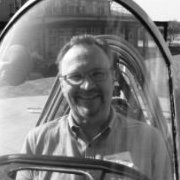


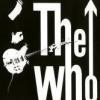

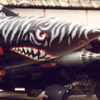

Wedge-TailedEaglePortraitRaptorDomains.thumb.jpg.41a306d3445a68f0f2df773e01776ea6.jpg)


